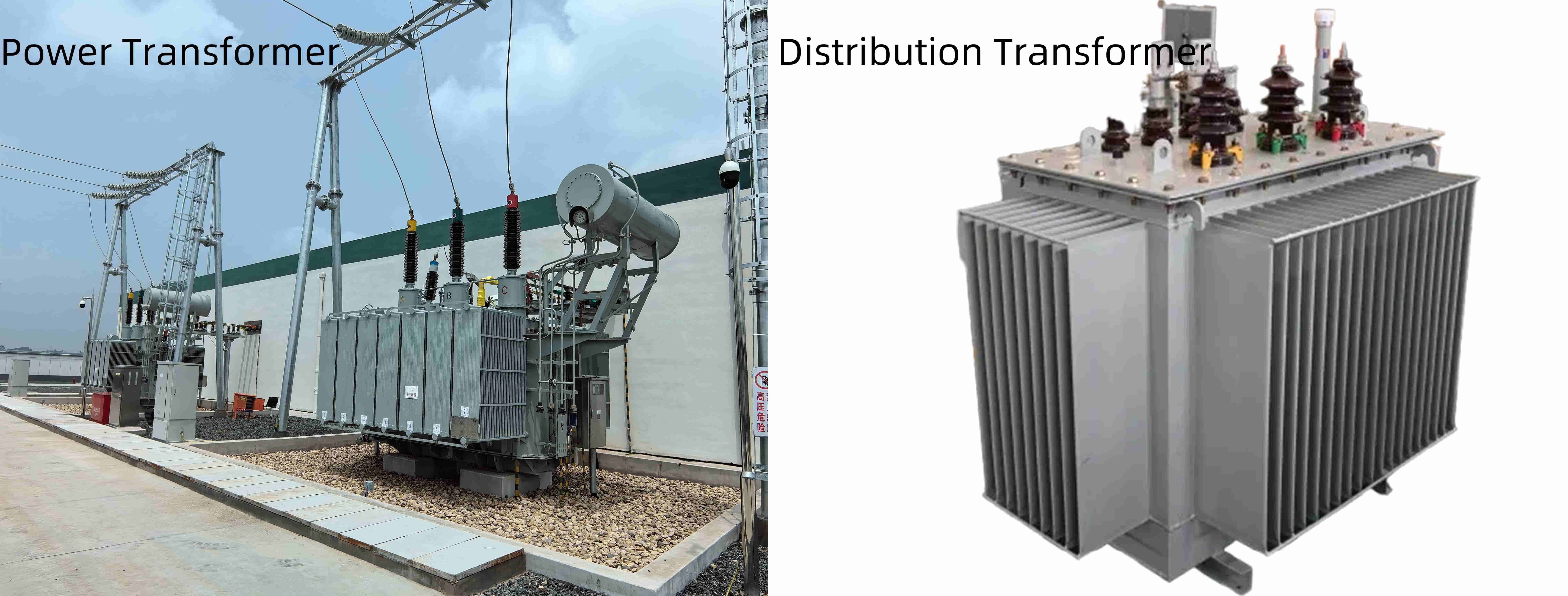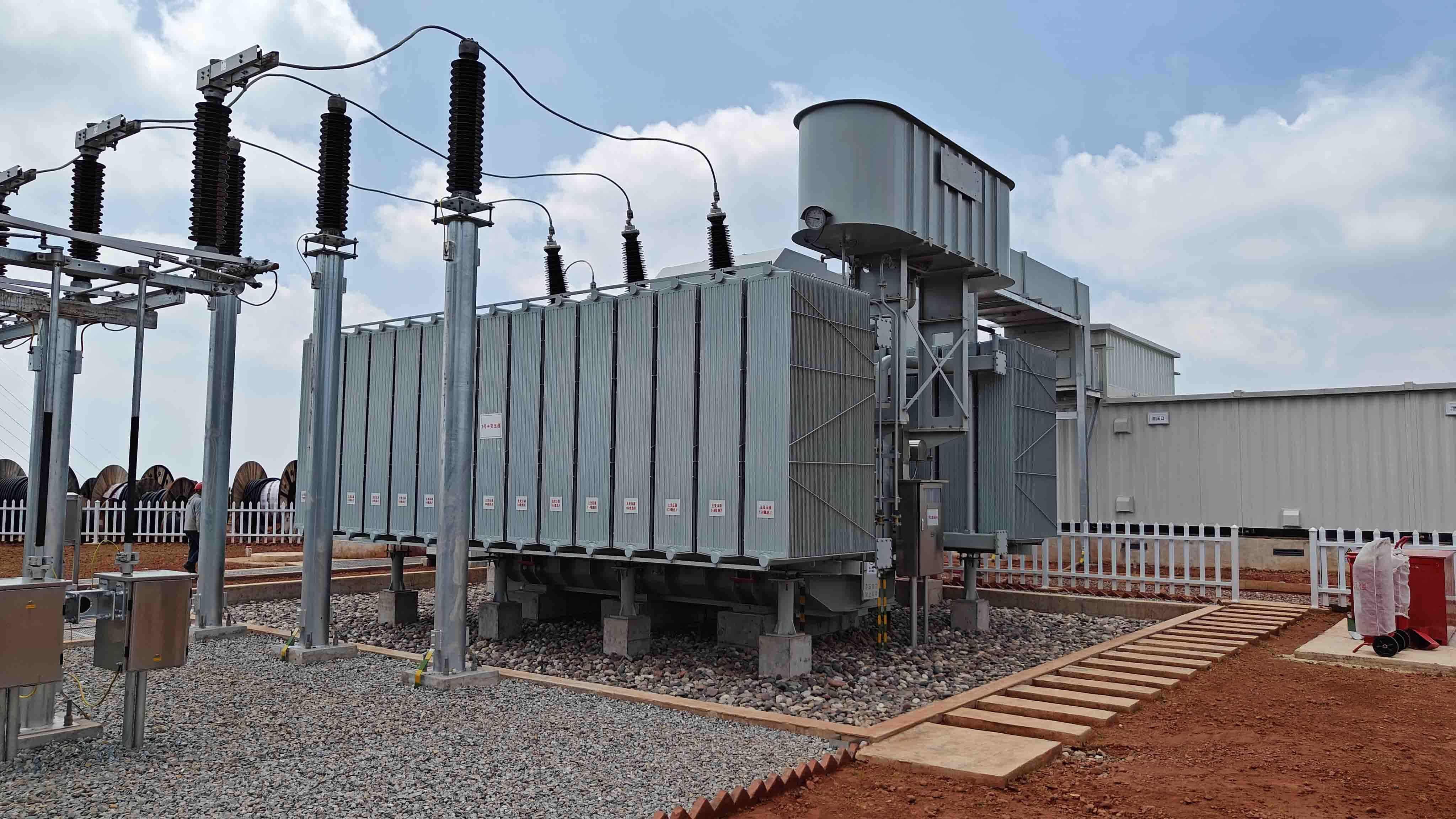Welcome to the official website of Luoyang AISITE Transformer Co., LTD
Power Transformer and Distribution Transformer: Main Differences and Application Analysis
Release time:
Jun 12,2025
Source:
In the power system, the transformer is the key equipment to achieve the transmission and distribution of electric energy. Although the basic principles of power transformers and distribution transformers are the same, there are significant differences in design, function and application. Clearly distinguishing between the two is crucial for power system planning, equipment selection and operation.

一、 Distribution Transformer
Main function: Reduce electrical energy from the higher voltage (usually medium voltage) of the distribution network to a low voltage level (such as 400V, 230V) that can be directly used by end users. It is located at the distribution end of the power system and directly supplies power to the load.
Typical features:
Voltage level: The voltage on the high voltage side (primary side) is 35kV and below (commonly 10kV, 6.6kV, 33kV), and the voltage on the low voltage side (secondary side) is low voltage (LV) (such as 400V/230V, 208V/120V).
Rated capacity: Usually between 30 kVA and 2500 kVA (or higher), meeting the power demand of local areas or individual users.
Design and construction:
Iron core: It is made of cold-rolled silicon steel sheets stacked together to form a magnetic circuit.
Winding: It is wound with copper or aluminum conductors to complete voltage conversion and energy transfer.
Insulation: It uses solid insulating materials (such as Nomex paper, epoxy resin) or insulating oil (mineral oil, synthetic ester, silicone oil, etc.) to provide electrical insulation and assist heat dissipation.
Cooling method: Common ones are oil-immersed and dry.
Box/Casing: Provides mechanical protection and contains cooling medium.
Performance requirements: The design needs to pay attention to load loss (copper loss) because its load rate varies greatly. High efficiency helps reduce system losses.
Main application scenarios:
Power supply for residential areas, commercial buildings, and office buildings.
Power distribution systems inside factories and workshops.
Street lighting systems.
Small renewable energy grid connection points.
Power supply for communication base stations and other facilities.

二、 Power Transformer
Main functions: In the transmission network and main distribution network of the power system, realize energy conversion (boost or reduce) and transmission between different voltage levels. Mainly used to connect transmission lines and substations of different voltage levels and to supply power to large industrial users or regional distribution networks.
Typical features:
Voltage level: Covers a wide range, from 66kV, 110kV, 220kV to 400kV, 500kV, 750kV and above (UHV).
Rated capacity: Large, ranging from a few MVA (megavolt-amperes) to hundreds or thousands of MVA, meeting the needs of high-power and long-distance power transmission.
Design and construction:
Core and winding: Also using silicon steel sheets and copper conductors, with complex structure and high insulation requirements.
Insulation and cooling: Mainly oil-immersed, using insulating oil for insulation and heat dissipation. Some use gas-insulated transformers (SF6) or dry-type transformers.
Ancillary equipment: Usually equipped with protection, monitoring and cooling control systems (such as gas relays, pressure relief valves, on-load tap changers OLTC, etc.).
Performance requirements: The design needs to pay attention to no-load losses (iron losses) because it usually runs continuously at a higher load.
Main application scenarios:
Power plant outlet boost (raising the generator voltage to the transmission voltage).
Voltage conversion and communication at transmission network nodes (substations).
Large regional substations, connecting high-voltage/ultra-high-voltage transmission networks with medium-voltage distribution networks.
Direct power supply to large industrial facilities (such as steel mills, chemical plants, data centers).
High-voltage direct current (HVDC) converter stations.

三、Conclusion and Selection Recommendations
Power transformers and distribution transformers serve different parts of the power system:
Distribution transformers are responsible for terminal voltage reduction and distribution to user equipment.
Power transformers are responsible for voltage conversion and energy transmission in the system backbone network.
Selection Basis:
For power supply to end-user equipment (low-voltage power), distribution transformers are selected.
For conversion of different high voltage levels in the transmission network or large substations, or for power supply to extremely large capacity loads, power transformers are selected.
Correct selection is of practical significance to ensure the reliability and efficiency of power system operation. We provide professional transformer solutions covering various voltage levels, capacities and application requirements. Welcome to contact us at any time if there is related need.
keyword:
RELATED NEWS


